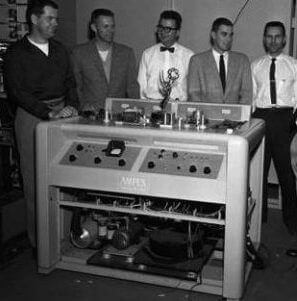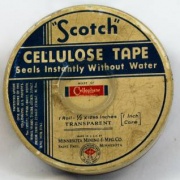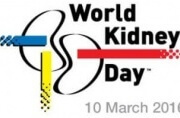June 7 is VCR Day

Ampex VRX-1000, 1956
Today is VCR Day. It commemorates the date in 1975 when Sony Corporation supposedly released the Betamax videocassette recorder (VCR) made specifically for home use. Some historians place the release in November 1975. In any case, it beat JVC’s Video Home System (VHS) to market by a year.
A VCR records the analog audio and video of a television broadcast or other signal source onto a removable, magnetic tape videocassette for subsequent playback. A programmable timer allows the user to schedule the recording to initiate, run, and conclude while unattended. It can also play back prerecorded tapes.
The history of the VCR dates back to the Ampex VRX-1000, which was released in 1956. Due to its substantial size and prohibitive cost of $50,000, it was affordable only to television networks and the largest individual stations. Toshiba, Philips, and RCA joined the fray; Sony partnered with Ampex for a while to share technology.
In 1965, Sony introduced the reel-to-reel type CV-2000, which stands for Consumer Video, as its first home-use model. (One ad shows the price as $695.) Despite Sony’s marketing efforts, it was primarily used for medical and industrial applications. Companies jockeyed for position for another decade.
There are many theories about why Sony won the battle to beat JVC to market in 1975, only to lose the war. One irrefutable fact is that each videocassette format was compatible only with its own VCR, ensuring that VHS and Betamax would never be able to play nice.
Sony may have gambled on its customers’ desire for quality over quantity, offering higher-definition tapes that could only record up to one hour of programming. While we value that today, it was much less of a selling point in 1975, when simply being able to record a show and watch it was more of a priority than being able to parse every speck of dust on M*A*S*H in hallucinatory detail.
When JVC released its VCR a year later, it used VHS tapes that held two hours. By the time Sony caught up, it was too late. VHS had become the standard. In 1981, Betamax had only a 25% market share. By 1986, it had dropped to 7.5% and continued to decline. Although it began selling VHS recorders in 1988, Sony continued to manufacture Betamax recorders until 2002 and only stopped producing Betamax tapes as of March 2016.
Of course, VHS didn’t stay on top forever. JVC stopped manufacturing standalone VCRs in 2008, long after DVD and Blu-Ray players had supplanted them. Streaming services put another nail in the VCR’s coffin.
Can a direct neural interface be far behind? As long as it doesn’t require the skull drilling we see in science fiction movies and the monthly fee is good, we say bring it on!
Until then, let’s celebrate our technological past and have a happy VCR Day!
© 2025, Worldwide Weird Holidays. All rights reserved.









Further proof that convenience often trumps quality.